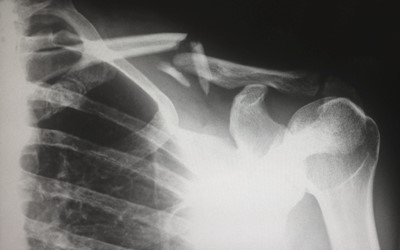Osteoporosis, a condition characterised by reduced bone density and increased susceptibility to fractures, is a significant global health concern. It is responsible for nearly 9 million fractures annually worldwide, with over 300,000 fragility fractures occurring in the UK each year. Fragility fractures result from low-level trauma but can often lead to severe consequences and increased mortality rates. Hip fractures, in particular, have a 30-day mortality rate of 6.5% and impose a substantial economic burden on healthcare systems.
While effective treatments for osteoporosis are available, the timely diagnosis and management of the condition remain a challenge. GPs play a crucial role in identifying individuals at high risk of fragility fractures. Although screening tools and Bone Mineral Density (BMD) scans are used in clinical practice, there is no UK-wide systematic screening programme for osteoporosis in primary care. This lack of standardised screening, combined with increasing GP workloads and limited public awareness, contributes to underdiagnosis and undertreatment of osteoporosis.
Newly published research by ARC North Thames researchers looks at routinely collected primary care data to understand how osteoporosis, osteopenia, and fragility fractures are recorded in UK primary care. The study – which forms part of a wider project to consider the incidence and prevalence of osteoporosis and fragility fractures in patients with Severe Mental Illness (SMI) in the UK - aimed to estimate the incidence of recorded diagnoses, explore trends in diagnosis rates, and examine differences in incidence rates according to age, sex, and social deprivation.
What did we do?
The study worked with anonymised data from the THIN (The Health Improvement Network) database. THIN contains primary care records of over 20 million patients in the UK, providing representative data for age, sex, socioeconomic status, and geographical distribution. Diagnostic Read codes entered by GPs were used to identify cases of osteoporosis, osteopenia, and fragility fractures.
The study design was a longitudinal population-based cohort study, to include all patients aged 50 to 99 years registered with participating GP practices in the THIN database between 2000 and 2018. Considering trends in data allowed researchers to examine the association between sociodemographic characteristics and diagnosis rates, and compared findings with existing literature.
What did we find?
The study found that osteoporosis and fragility fractures were more commonly diagnosed in women and older age groups. The incidence of recorded osteopenia was lower than expected, particularly in men and advanced age groups. Social deprivation was independently associated with a higher risk of osteoporosis and osteopenia diagnosis and fragility fractures in men, but with far smaller differences observed in women.
Comparing the findings to existing literature, the study highlighted the scarcity of population-based data on the incidence of osteoporosis diagnosis not defined by a fracture. Previous studies primarily reported prevalence rather than incidence. The study's observation of lower rates of osteopenia diagnosis, despite higher prevalence reported in other studies, suggests under-recording and under-diagnosis in primary care records.
The study also revealed an increase in the incidence of recorded osteoporosis diagnosis and fragility fractures over time, from 2009 onwards in women and 2012 onwards in men. This might be a result of fracture risk assessment tools and comprehensive guidelines on the prevention and treatment of osteoporosis, which are being introduced across UK primary care settings. But despite increased diagnosis, there was no corresponding reduction in subsequent fractures. This suggests the need for improved treatment implementation.
What could happen next?
The study highlighted the gender and age disparities in osteoporosis diagnosis and fragility fractures. Osteoporosis screening has historically focused on women, leading to a prevention gap among men. More awareness is required regarding osteoporosis and fractures also affecting men to fill this prevention gap. For example, public health campaigns for bone health should target populations that may be at risk of under-diagnosis, including men and people living in socially deprived areas.
The oldest age group in the study demonstrated low rates of osteopenia diagnosis but high rates of fragility fractures, possibly due to limited referrals for bone density scans. There might be an opportunity to include osteoporosis screening and advice on healthy lifestyle to prevent osteoporosis during health checks for those aged 50 and over. Moreover, bone health could be discussed during comprehensive care planning of older adults, especially for people at risk of falling. Interventions should account for the older person’s degree of frailty and their individual wishes.

 09 Jun 2023
09 Jun 2023
